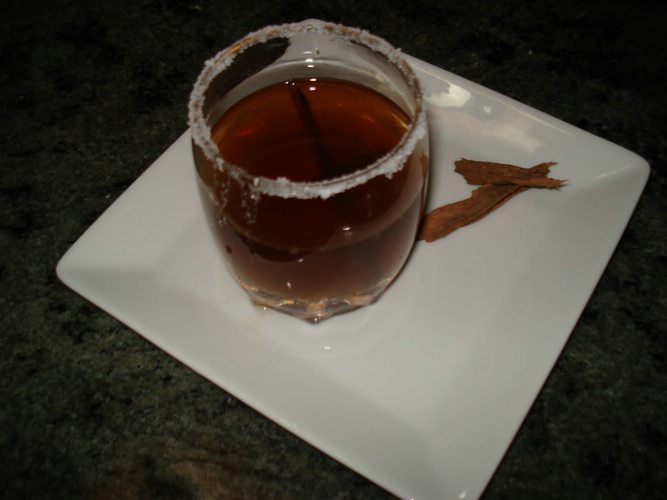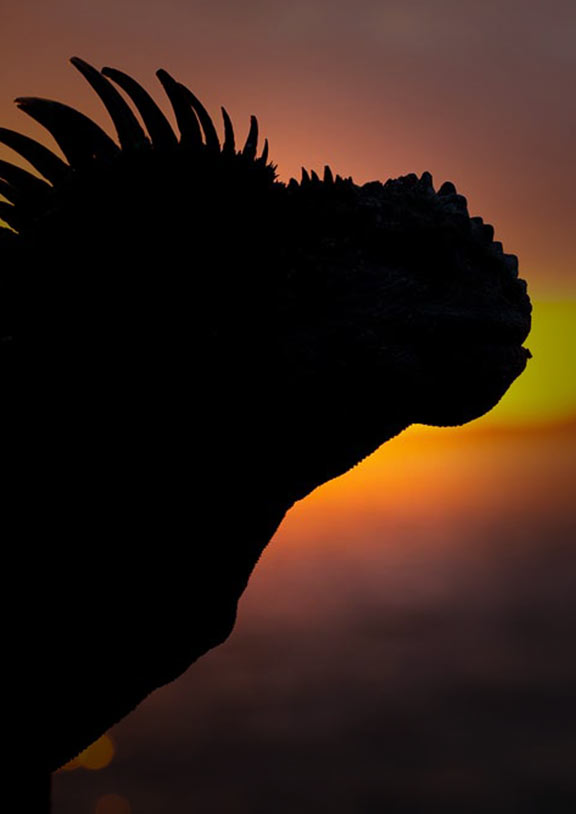In our continuing quest to quench our thirst in South America, we travel to Ecuador, a tiny country with an outsized geography that includes Andes, Amazon, coast, and the Galapagos Islands. Wherever you travel here, you are likely to encounter two very popular libations – canelazo and chicha.
Warming Canelazo
When visiting the high Andes, nothing hits the spot like a warm drink on a cold night. The Andes play host to top Ecuador destinations such as Quito, Cuenca, Riobamba, and Baños. Because of the altitude, when the Andean sun goes down, air temperatures drop fast. For those chilly evenings out on the town, a warm beverage such as canelazo provides a great reprieve.
Recipes for canelazo vary but the simplest preparation is cinnamon, cloves, and panela (a type of natural brown sugar) boiled in water. A cup of this flavored water is topped off with aguardiente, which is sugar-cane alcohol (aguardiente, literally “fiery water,” is distilled from sugar cane. Regional variations of aguardiente with different flavorings exist across South America, but in Ecuador the liquor is generally unflavored).

Warm your hands around a steaming cup of canelazo, a popular beverage in Ecuador’s cold Andean regions.
One variation of this warm concoction is the naranjillazo, prepared with naranjilla, a local fruit similar to an orange. In some recipes, full wedges of the fruit are boiled with the cinnamon water, and in others, the juice of the fruit is added at the end along with the aguardiente. Whatever the specific preparation, the final product is similar to a hot toddy or mulled wine. There are also non-alcoholic varieties of this drink.
On an Ecuador vacation, a great place to try canelazo is in Quito’s historic center and in particular on a street known as La Ronda. Located at the foot of El Panecillo, the small bread-loaf shaped hill bordering the old town, the cobbled street of La Ronda is one of the oldest in Quito, lined with small shops, cafes, bars, and restaurants that serve the spiced beverage.
In November and December, travelers will also find canelazo for sale by street vendors during holiday and street festivals. The drink is specially made for the grand street procession in Cuenca known as “El paso del niño viajero”, and the largest Christmas festival in Ecuador. Christmas season also coincides with the Fiestas de Quito. For the long evenings spent strolling around at outdoor fairs and watching fireworks displays, drinking canelazo is Ecuadorians’ time-tested way to stay warm.
Chicha
Chicha has claim to fame as one of the oldest alcoholic drinks in South America, with ancient roots in the Andes and the Amazon regions. It is a fermented beverage, commonly using corn and/or other grains and roots such as quinoa or yuca. Typically made in people’s homes, chicha is sold on the streets by vendors, in markets, and in rooms (usually part of a house) called chicherias or chicheros. This is the case not just in Ecuador but also in Peru, Bolivia, Colombia, and other South and Central American countries.
To make chicha, large yellow kernels of maize are germinated to release starches, boiled, and then fermented for several days. The result is a white-yellow liquid, with a milky consistency and a sour aftertaste, with usually 1-3% ABV.
Full disclosure for curious travelers: in some preparations, the maize is not germinated but rather ground by hand and then chewed in the mouth of the preparer. After chewing for 3 to 5 minutes, the chicha maker spits out the liquid. Enzymes in the saliva break down the starches, producing alcohol which is then fermented. Those averse to consuming others’ spittle should ask about the preparation process prior to accepting a drink.
If you travel to Quito in September, the Fiesta del Yamor in the town of Otavalo is a great place to sample corn chicha. This festival has ancient roots in Inca and pre-Inca cultures. It honors the southern hemisphere’s spring equinox and is a thanksgiving to the Sun God for a successful corn harvest. In Otavalo, a special chicha is brewed from 7 different varieties of corn, the best of the crop specially reserved for this occasion. The corn is ground together and boiled with aromatic plants over firewood ovens for a period of 8 to 10 hours. After cooking, the chicha is placed into large clay pots and allowed to ferment for 48 hours until it is ready to drink.
Articles, videos and more
Articles and websites
Canelazo – Spiced Cinnamon Rum Drink
Chew It Up, Spit It Out, Then Brew. Cheers!
Chicha – An Ancestral Beverage to Feed Body and Soul
Hot Boozy Drinks
Videos
How to make Canelazo
How to make Chicha
Plan your own adventure in Ecuador
The travel experts at Peru For Less can help you organize fully-customized Ecuador tours to Quito, Cuenca, and other destinations. Contact us to start planning your own dream vacation.

Latin America for Less is a group of travel experts who live, work, eat, and breathe all things South America. Their inspiration stems from a deep appreciation for the beauty and diversity that make this continent so special.






